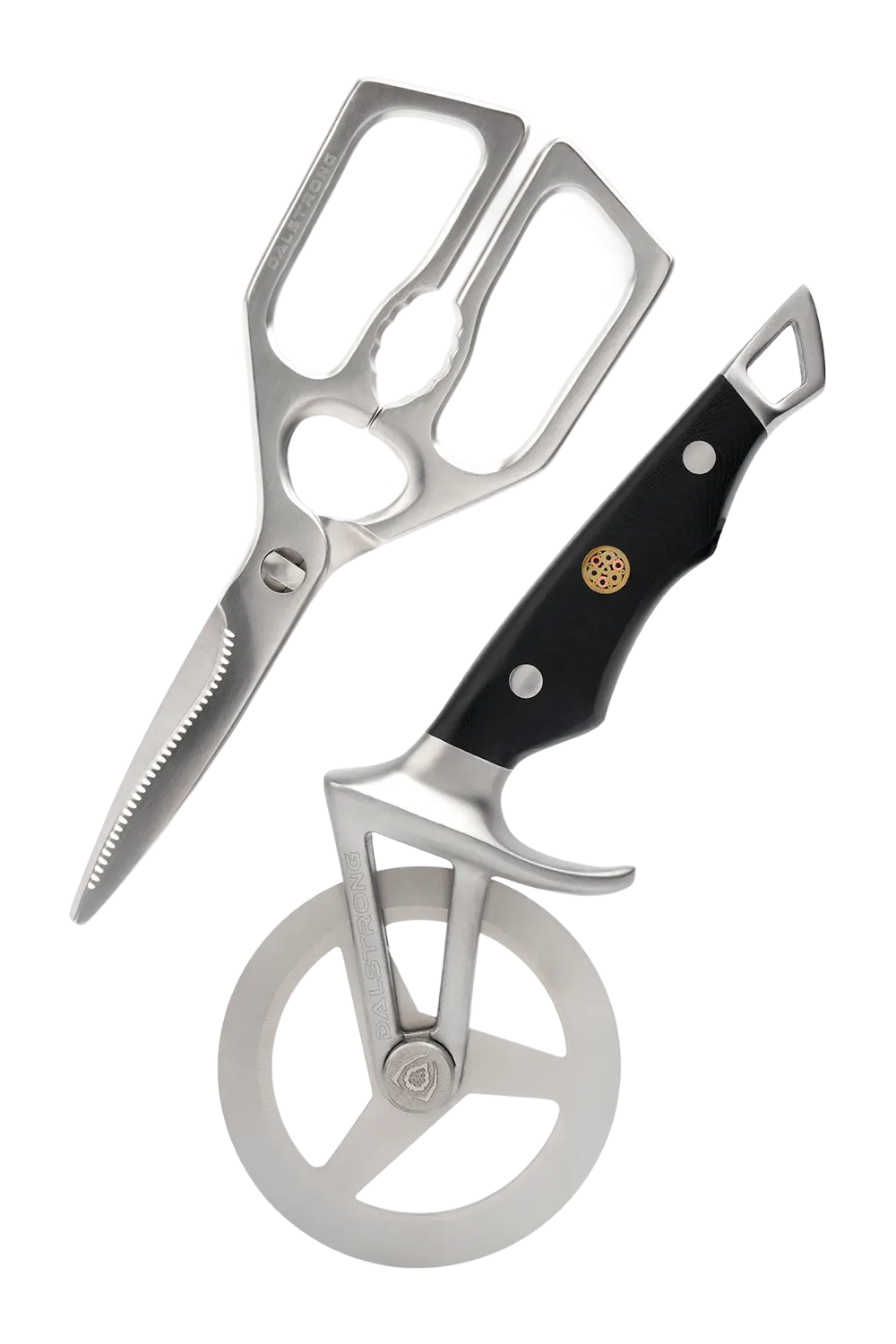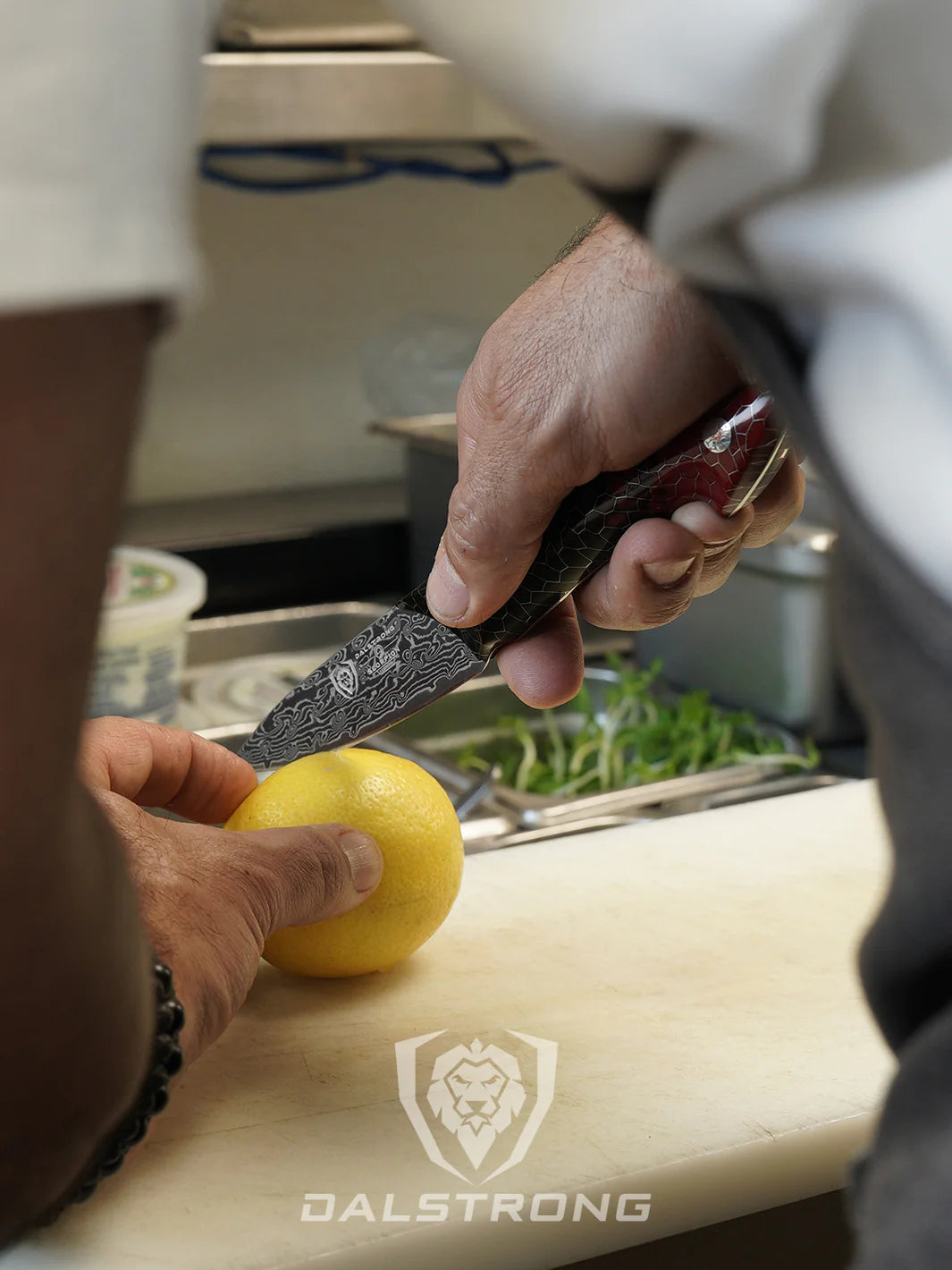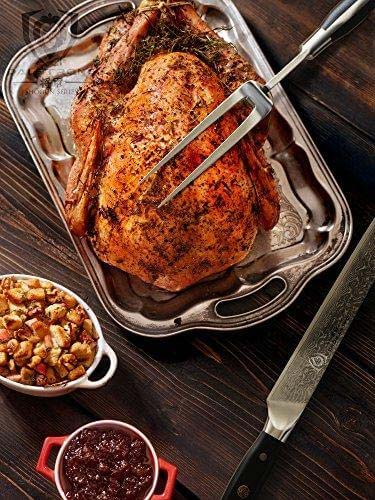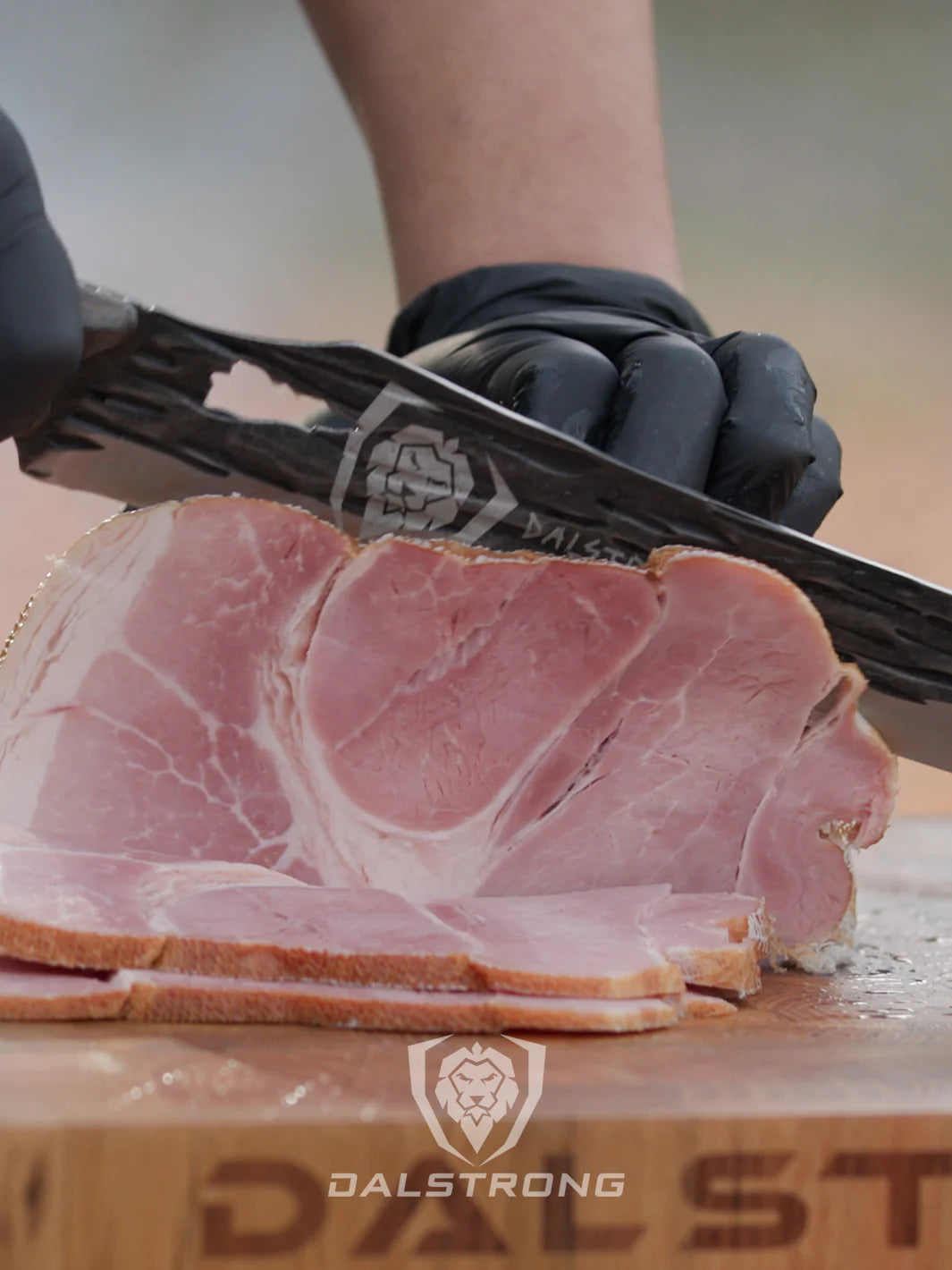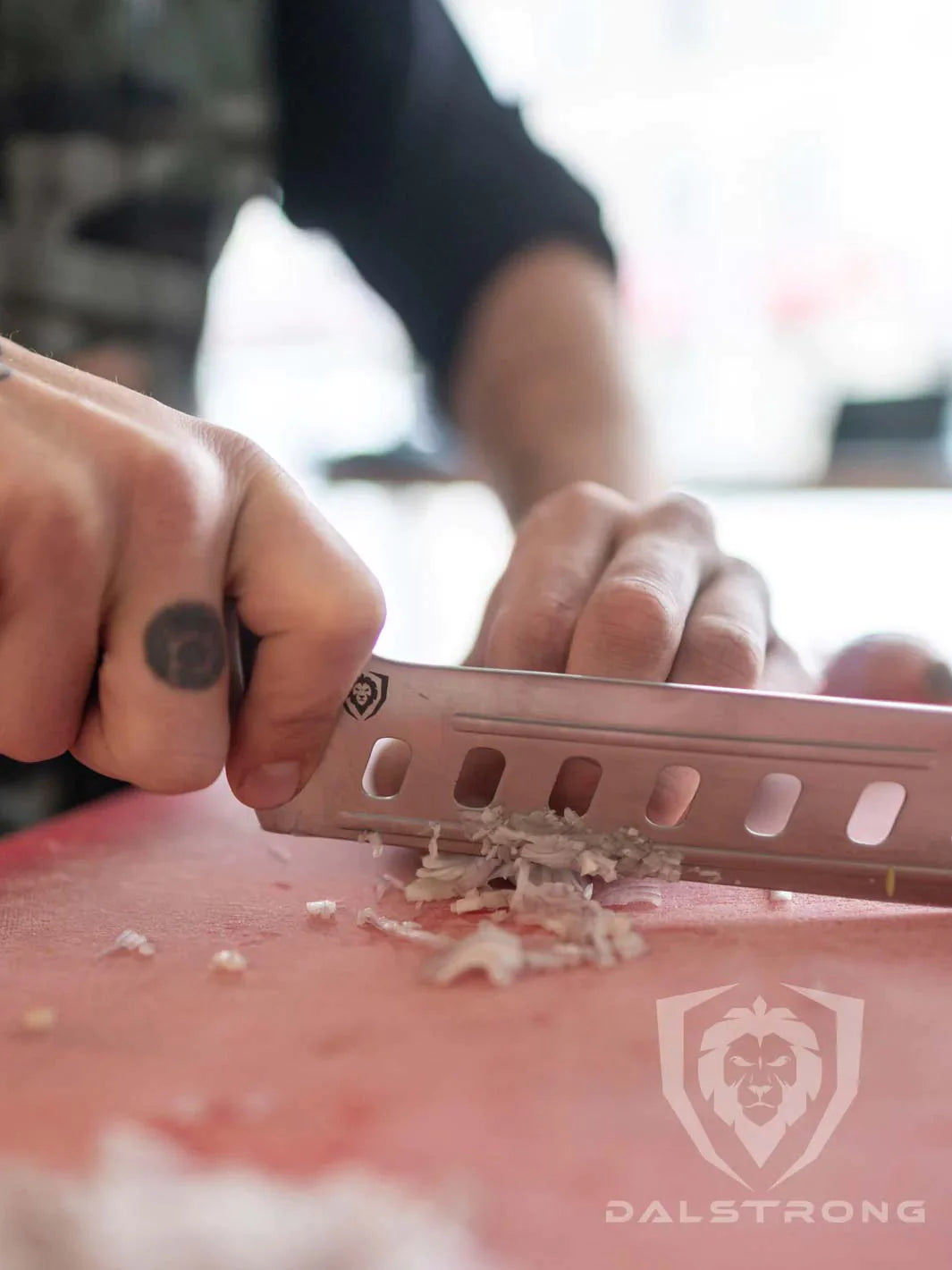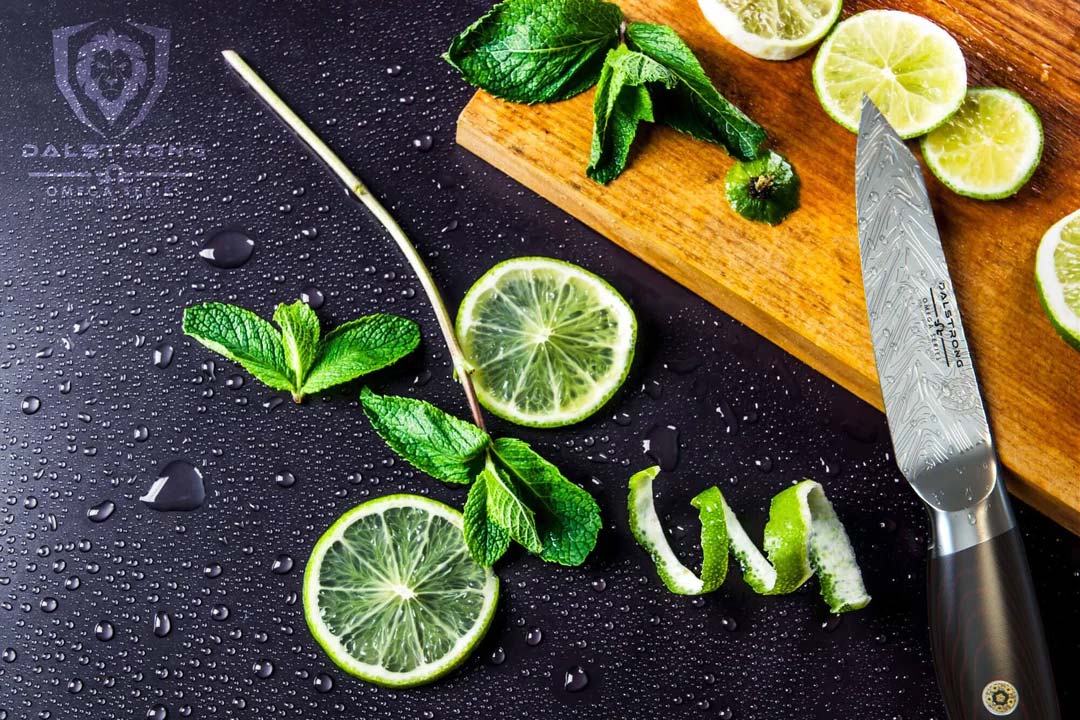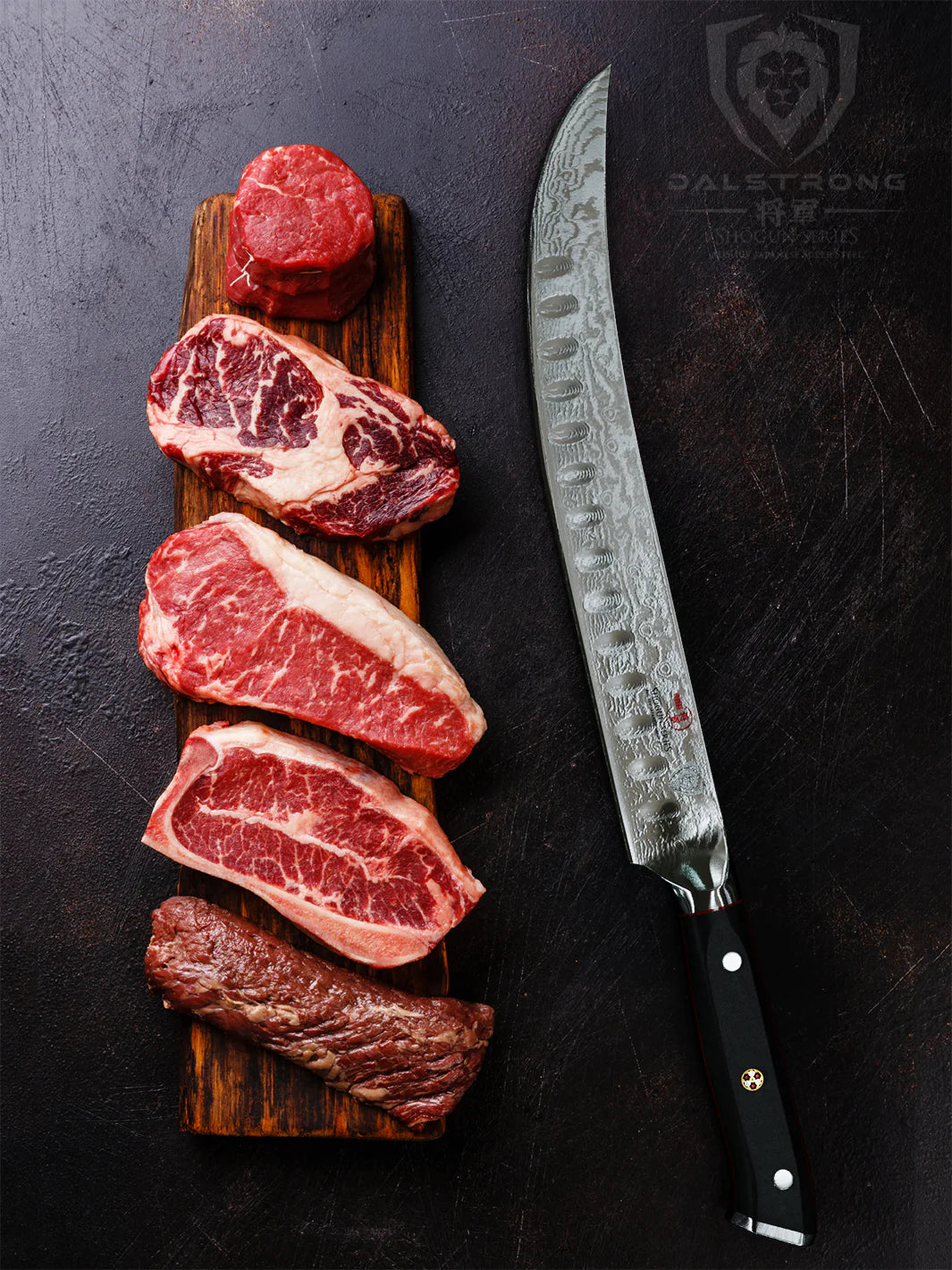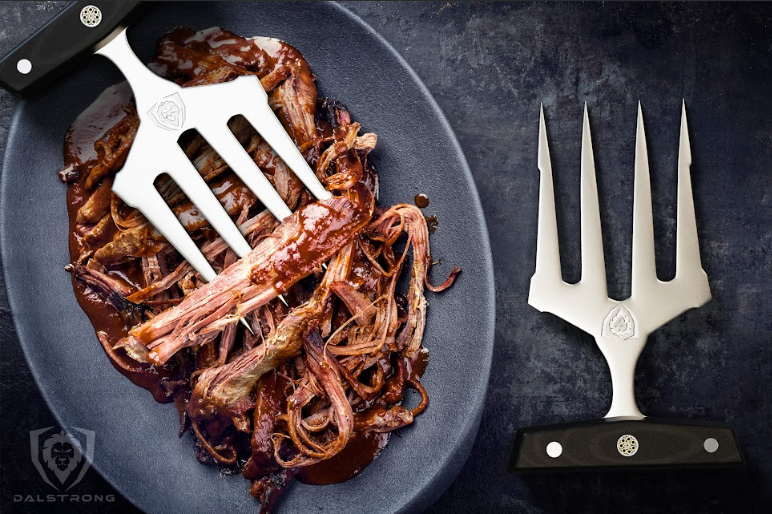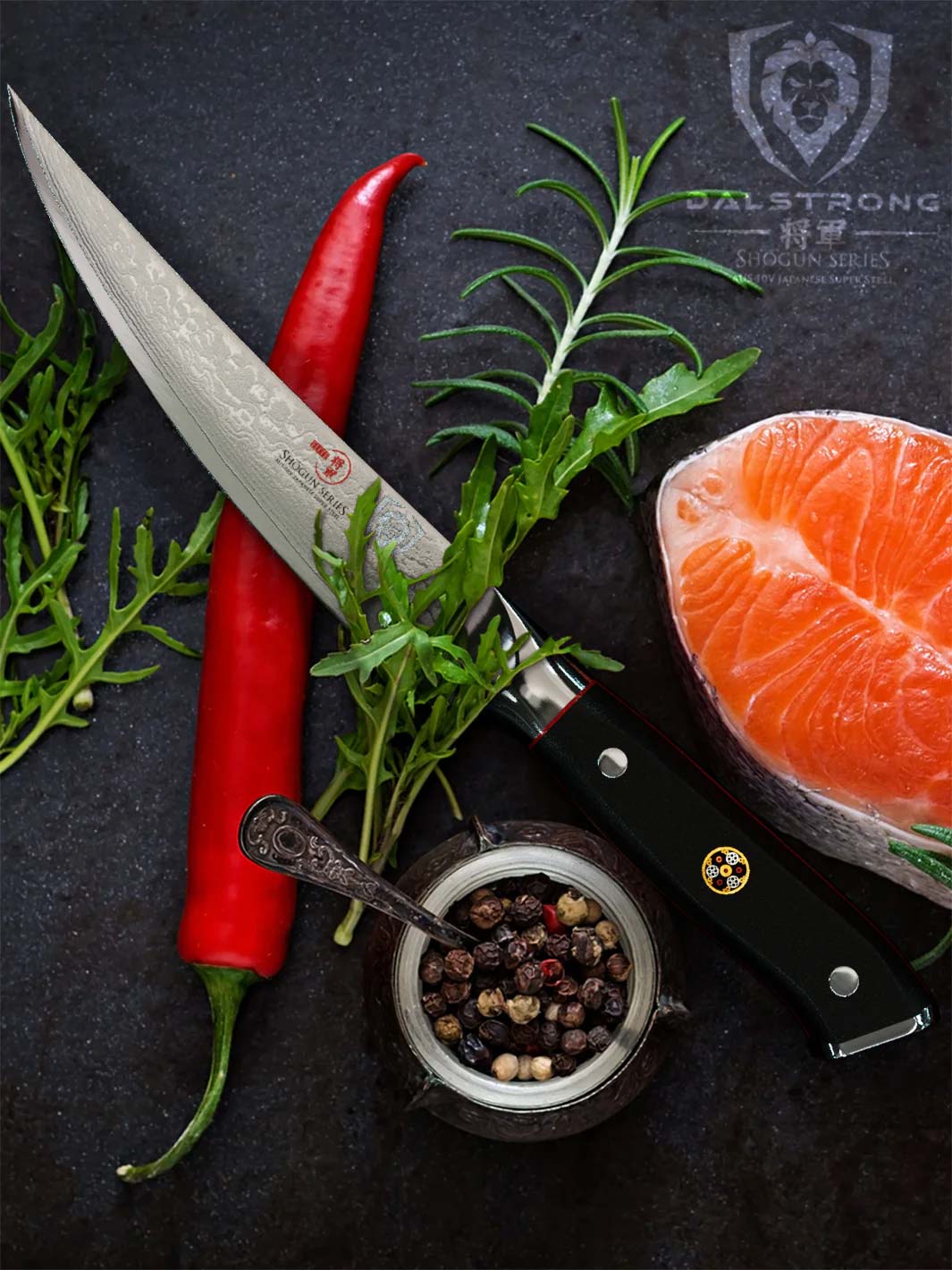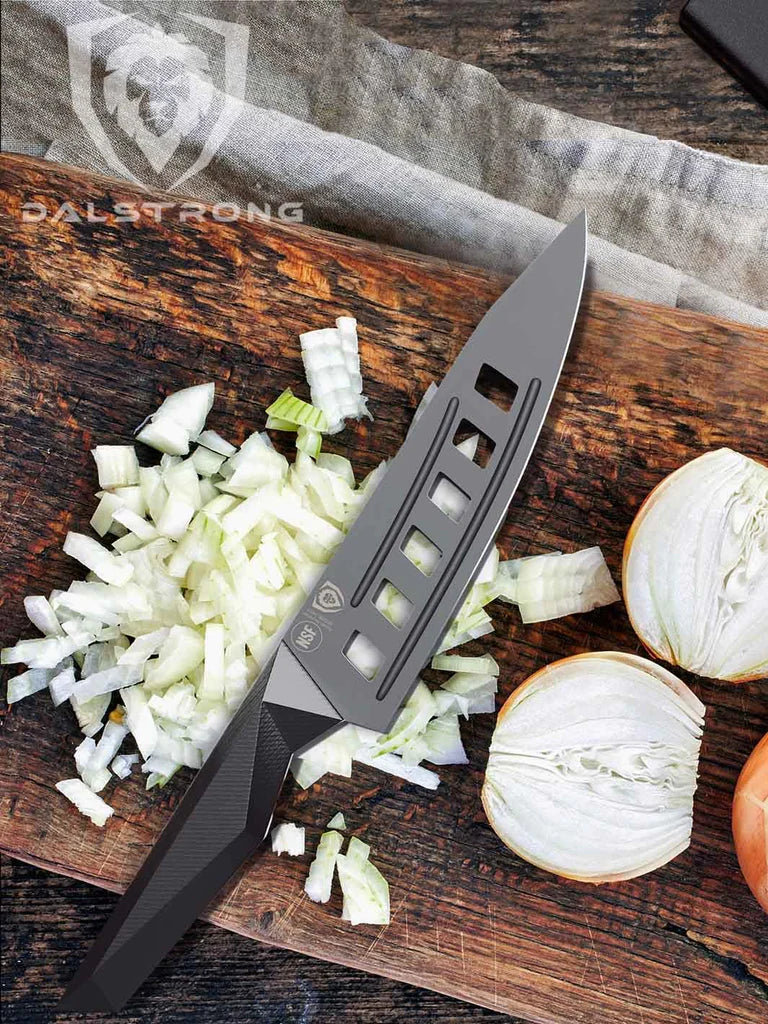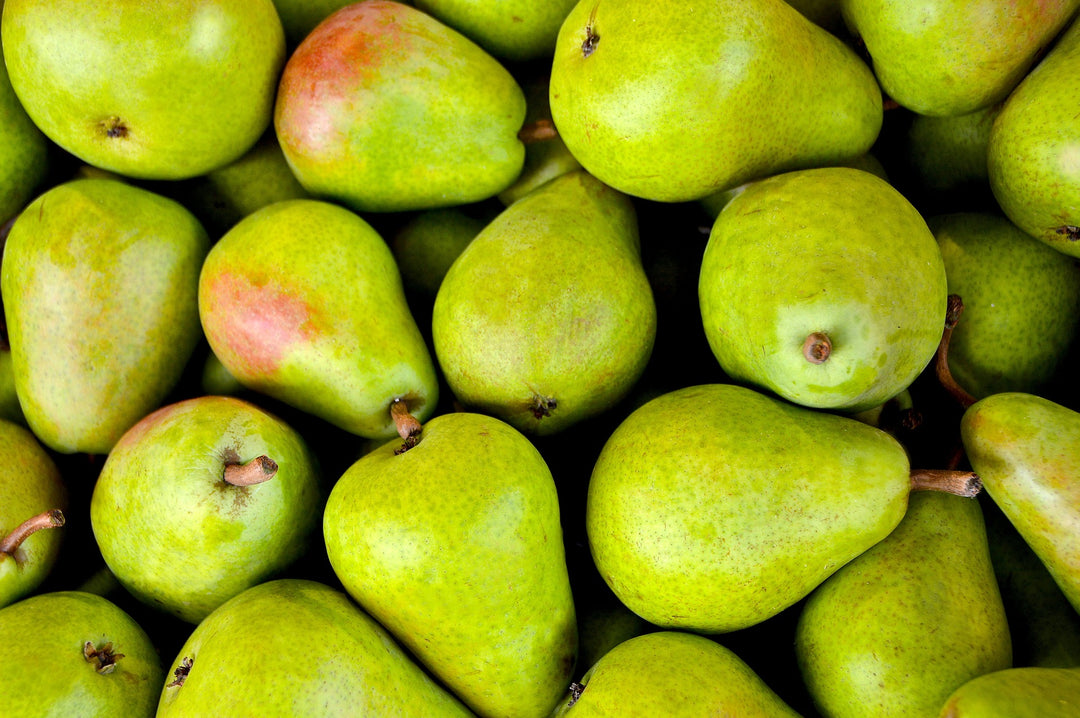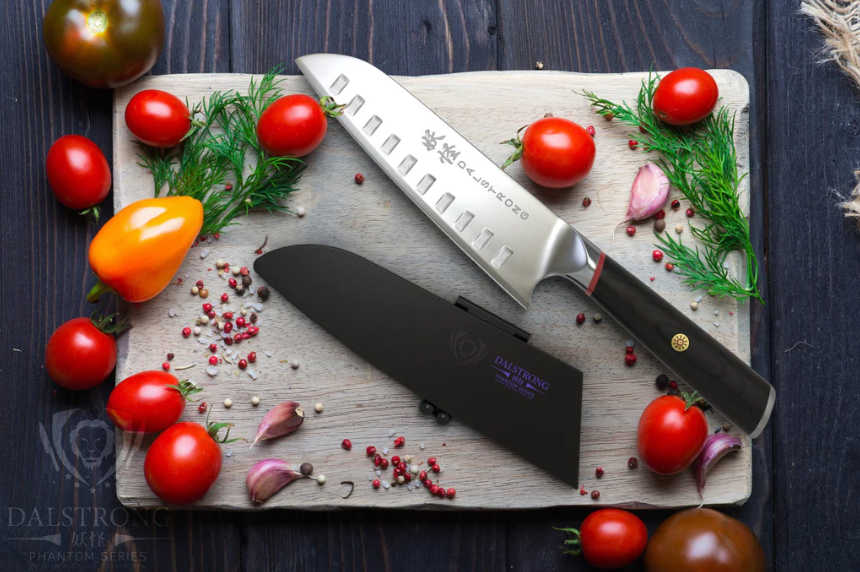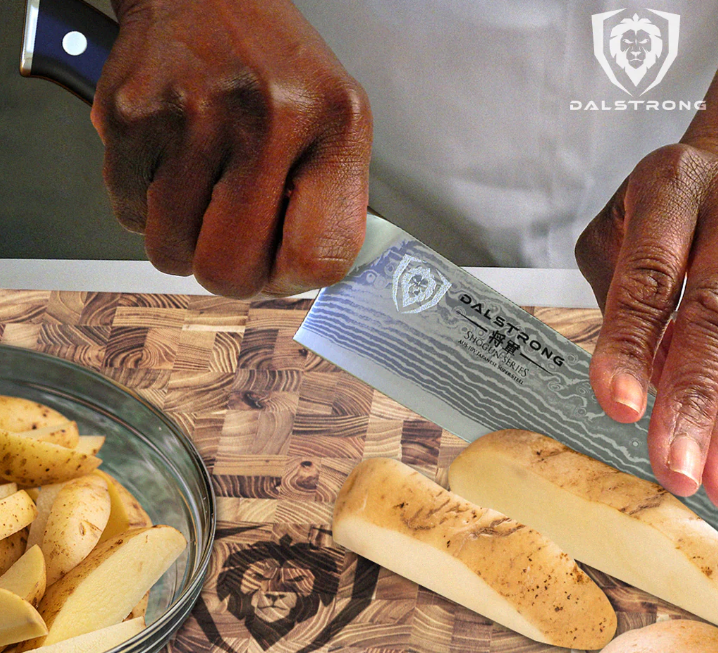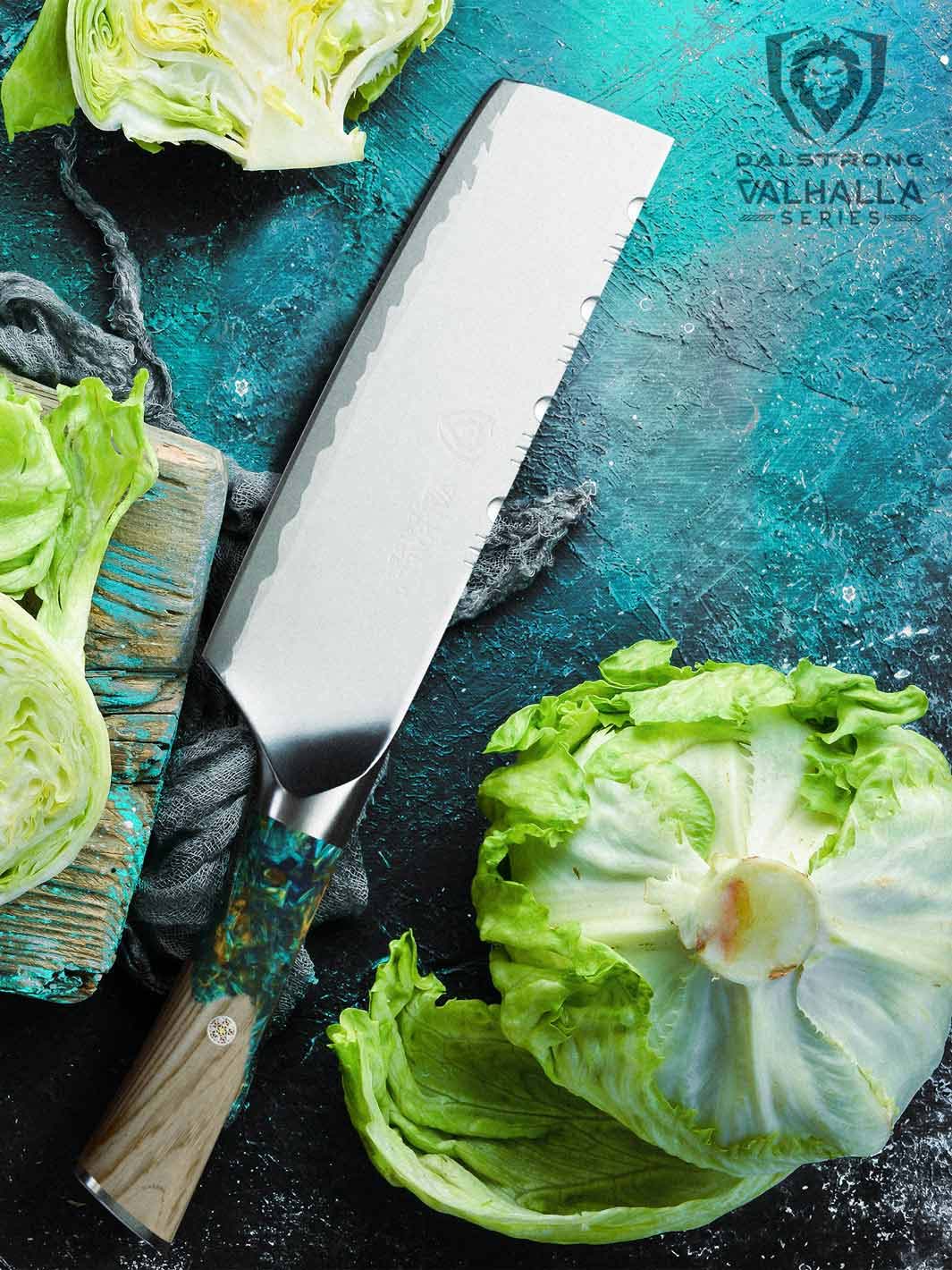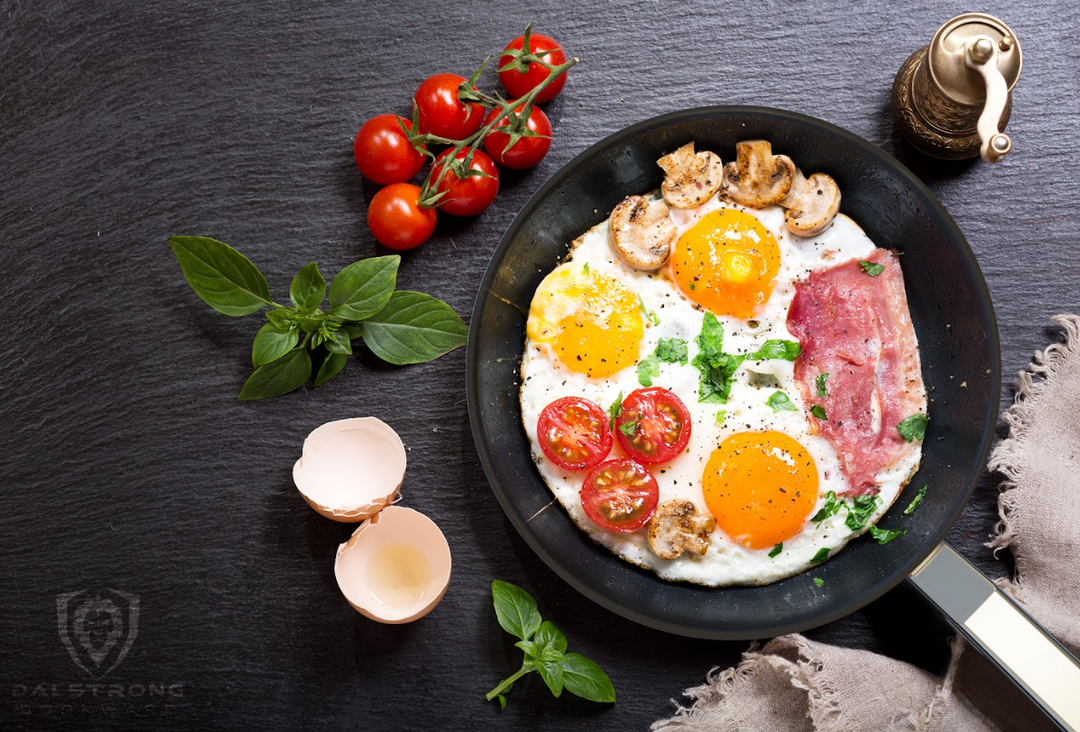How To Cut Potato Wedges Like A Chef
3.5'' Paring Knife | Frost Fire Series | Dalstrong ©
How To Cut Potato Wedges
- Wash the potatoes and scrub them gently with a vegetable brush.
- Place the potato on a cutting board and using a large chef’s knife, slice it in half lengthwise.
- Lay the cut side facing down and half the potato again to create four potato quarters.
- Flip each potato quarter and slice up the center of the cut side to create eight wedges.
- Repeat these easy steps with as many potatoes as you need to.
If you've gone out with your friends after work, you've probably come across a restaurant or a bar that serves potato wedges as snacks.
But not only are they the perfect option for an evening with friends, they are also the perfect complement to a meal, the additional side of a barbecue or party, and the ideal snack for children and adults.
They are delicious and also very easy to make! Cutting them is easier than you imagine and there are many recipes where you can incorporate them. In this article, we’ll walk you through some of them and we’ll teach you easy tips to cut potato wedges like a chef!
1. What’s The Difference Between Potato Wedges And Fries?

The potato is one of the root vegetables that we can experiment with the most in the kitchen. It can be prepared in various presentations, mashed potatoes, French fries, boiled potatoes, baked potatoes, chips, and many more.
Potato chips are very thin slices of potato that can be baked or fried, they are commonly served as crunchy snacks. French fries are usually cut into strips and they tend to be mostly fried, although some people like to bake them; they are served as sides.
Whereas potato wedges are sliced lengthwise, often unpeeled; they have sort of an irregular triangular shape, and they're classically baked or roasted. In many European countries, potato wedges are served with sour cream, ranch dressing, or sweet chili sauce.
A similarity between all of these recipes is that the potato skins can be preserved. However, when mashing potatoes, it is important to peel them first.
2. Know Your Potatoes: How To Distinguish 3 Types Of Potatoes

There are hundreds of different types of potatoes in the world, and although we don’t really find that wide variety of root vegetables in our supermarkets, we can definitely find some different types of potatoes that have different purposes in our recipes.
We will now divide potatoes into 3 simple varieties (which group many types of potatoes together), and their differences:
- ‘Waxy potatoes’ (red-skinned, white-skinned, and fingerling potatoes). These potatoes hold their consistency really well, therefore they are perfect for soups, stews, and salads.
- ‘Starchy potatoes’ (russet potatoes, and sweet potatoes). These potatoes tend to absorb liquids pretty well, therefore they are perfect for baking and frying.
- ‘All-purpose potatoes’ (yellow, blue, Yukon gold, purple, and new potatoes). These potatoes usually have really thin skins, they are perfect for steaming, mashing, baking, boiling, frying, and roasting.
3. Different Types Of Potato Cutting Styles
9.5'' Chef's Knife | Shogun Series | Dalstrong ©
In addition to having different types of potatoes for a variety of recipes, there are different potato cuts for different preparations. Let's take a look at some of these popular cutting styles but don't worry, you don't need fancy knife skills to pull any of them off.
- ‘Slicing’ means cutting a vegetable -in this case, a potato- into thin pieces using a quick and fluent movement. Potatoes can be sliced by cutting them crosswise and repeating the cut many times until you reach the end of the potato. Potatoes are usually sliced for potato gratins and potato chips.
- ‘Julienne cut’ means match stick cuts, it allows you to cut your potato into long, thin, rectangular pieces. Potatoes tend to be cut in julienne for french fries, or for the first step in cutting into cubes.
- ‘Brunoise’ and ‘Macedoine’ means fine dice and large dice respectively. This type of cut is ideal when preparing some kind of sauce, stew, soups, and also potato salads.
- ‘Crushing’ is a technique used to crush your potatoes in order to prepare creams, mashed potatoes, or puree.
- ‘Wedges’ are mostly used in sweet potatoes and russet potatoes for oven preparations.
- It’s important to keep in mind that each of these cutting methods is designed to produce different consistencies and sizes of vegetables. Each of which can be used when cooking different potato recipes.
4. How To Cut Potato Wedges
4'' Paring Knife | Quantum 1 Series | Dalstrong ©
With this method, you’ll easily obtain perfect potato wedges and sweet potato wedges.
- Wash the potatoes with lukewarm water and scrub them gently with a vegetable brush to remove any soil or pesticide residue that it may have.
- Time to put those knife skills to good use. Place the potato on its side on a cutting board, and using a large chef’s knife, slice it in half lengthwise.
- Lay the cut side facing down and slice the potato in its half again to create four potato quarters.
- Flip-up each potato quarter, and slice up the center of the cut side to create eight wedges.
- Repeat these easy steps with as many potatoes -or sweet potatoes- as you need.
Keep in mind that the wedges don't have to be completely perfect. The difference might be insignificant, and in the end, a good cut will produce good cooking.
5. How To Cook Potato Wedges

We already learned that we need russet potatoes to prepare delicious potato wedges; we already learned how to cut potato wedges, but now we’ll take a look at the different ways we can cook potato wedges. These techniques can also be applied to sweet potato wedges.
Baking potato wedges
Baking is one of the greatest techniques to cook potato wedges because they end up being ultra-crispy. To bake them, you’ll need to preheat your oven to 400 degrees. While you’re waiting for the oven to be hot enough, a big tip is to soak the raw potato wedges in hot water for some minutes. Season them, and arrange them in a generously greased baking tray. Bake for 15 minutes, until the potato wedges look lightly golden.
Deep frying potato wedges
This is the most common method to cook potato wedges. All you need to do is heat some oil at a high flame in a pan. Once the oil is fully heated, turn the temperature to medium heat and add the potato wedges. They’ll be ready when they look light golden brown.
Air frying potato wedges
A really popular option to get healthy versions of our beloved meals. Making air fryer potato wedges will give you crispness on the outside and fluffiness on the inside of your potatoes. You just need to preheat your air fryer for 10 minutes, grease the tray, line up the cut potatoes on the surface and let them cook for 15 minutes at 400 degrees.
6. Top Tips To Make Crispy Baked Potato Wedges

You might know this by now, but the secret of any good meal lies in the seasoning. Each person relies on their seasoning of trust; from garlic, onion powder, paprika, parsley, and pepper, to a mixture of Italian seasoning and cayenne powder. Nevertheless, let’s learn top tips (besides a good seasoning) to make crispy baked potato wedges:
- Choose the right potato for you. We have already delved into the different types of potatoes and what kind of recipes they’re good for. We highly recommend using russet potatoes when making baked potato wedges, but you’re free to use the ones you prefer.
- Use enough olive oil for your baking sheets. You’ll need a good amount of grease to achieve that crispy texture. The cooking spray won’t make a good job and olive oil enriches the flavor and is also healthier, so don't be afraid to be generous with it.
- Prepare an amazing seasoning. Potatoes absorb by nature, it’s important to let the potato wedges rest with all the seasoning for a few minutes before placing them inside the oven. We highly recommend seasoning with minced garlic, salt, onion powder, paprika, and black pepper. And don’t forget to add some shredded parmesan cheese and fresh chopped parsley.
- Last but not least, place the potatoes on the right side of the oven. You can place the baking sheet at the bottom rack of the oven and (since the bottom usually gets more heat) you can move the baking sheet to the top rack of the oven before the potatoes get too toasted, and finish them under the broiler.
7. Frequently Asked Questions About Cutting Potatoes Into Wedges
How do you cut potato wedges?
Place the potato on its side, cut it lengthwise, lay both pieces on the flat side, and cut them in half again. Flip-up the potato pieces, and cut down the center to have 8 potato wedges ready to be baked.
What is the easiest way to cut potato wedges?
The method that we have explained above seems very easy and practical since you will always have support when cutting the potato, by placing the cut side on the cutting board until the last cut when you’ll have to slice the wedge into a quarter by cutting down the center.
How does Gordon Ramsay cut potato wedges?
In “Gordon Ramsay: Cookalong Live,” when chopping potatoes into wedges for oven chips, chef Ramsay places the potato down on its side, slices it in half, and then slices each half into a wedge, and each wedge into a quarter. The only difference between our technique and his is that he never lays the cut-side of the potato on the cutting board.
How do you slice potatoes perfectly?
The most important step is to cut the potato in half lengthwise. Then, lay the cut side of each potato on the cutting board. Henceforth, you can start slicing as thin or thick as you like. Another tip is to use a vegetable peeler, this could help you if you’re trying to get evenly thin potato slices.
8. Best Knives To Cut Potato Wedges With
1. Chef's Knife 7" | Gladiator Series
This mid-length chef knife offers ultimate control as you slice, dice, chop, and mince your way through. The perfect compliment for your cooking style, from professional restaurant kitchens to a simple meal for one, this knife will make you feel like a chef.
PROS:
- Tall blade height gives knuckle clearance to assist with food preparation and chopping activity.
- Ergonomic handle shape for maximum comfort, grip, and maneuverability.
- Added chromium for stain resistance.
- Cleans easily for low maintenance.
CONS:
- Many would prefer a more innovative design.
- Some people prefer a larger chef's knife.
2. Paring Knife 4" | Phantom Series
This paring knife is a precision specialist, engineered for coring, mincing, and peeling fruits and vegetables. As indispensable as the chef’s knife, this paring knife is slightly longer than average, which allows you a little extra slicing surface area.
PROS:
- Precision-forged blade with premium Japanese AUS-8 at 58 HRC.
- High levels of chromium were added to steel for stain resistance.
- Ice-tempered blade ensures excellent resilience and superior edge retention.
- Sanitary build perfect for busy kitchens.
- The beautiful, detailed Japanese engraving on the blade requires extra cleaning precautions.
- It might not be the most comfortable tool for larger vegetables.
3. Chef's Knife 10" | Gladiator Series
This versatile knife brings strength, agility, and durability to undertake a variety of culinary adventures: from cutting, chopping, mincing, and slicing any vegetable, meat, or fish. The longer blade length ensures no task is too large, no food too formidable.
PROS:
- Precisely tempered for added durability
- Full tang for incredible robustness & quality
- Triple-riveted for even more durability
CONS:
- You may also prefer a classic 8" chef's knife.
- Some chefs like a more modern design.
4. Bird's Beak Paring Knife Peeler 3" | Crusader Series
This collection of all-steel knives offers a minimalist aesthetic with unobtrusive beauty. The blade is reminiscent of historical medieval swords, welding the past and present together. Delivering exceptional performance.
PROS:
- It maintains the perfect balance between ultra-thin slicing and maximum resilience.
- Fuller groove near spine reduces friction & stuck on food while lightening the knife for improved balance
- It includes the 'Dalstrong Scabbard', a hand-crafted blade sheath to hold the knife, protecting your blades and fingers.
CONS:
- While ideal for potatoes and small vegetables, this is not best suited to larger food items.
- Some people opt for a more traditional handle.
5. Chef's Knife 8" | Army Green Handle | Shogun Series X
A premium high-quality knife with an exquisite finish that is not only a beautiful statement in craftsmanship, but also serves the purpose of reducing drag and minimizing stuck-on food. Perfect for cutting vegetables and delivering the best results when preparing your food.
PROS:
- Japanese super steel core. The ultimate steel for the ultimate performance.
- Rust/Corrosion resistant cladding means your knife will stay cleaner and last longer
- Precise cryogenic tempering increases the steel’s crystalline structure, enhancing, strength, flexibility, and hardness.
CONS:
- The price may go beyond many home cooks’ budgets.
- If you're not a fan of green, this handle is also available in Blue, Red, White and Black.
Frequently Asked Questions
How to cut potatoes into fries easy?
Start with roasting potatoes, like red potatoes, for a flavorful choice.Wash and peel them if desired. Place the potatoes in cold water for about 30 minutes; this makes them easier to cut. On a cutting board, halve the potatoes lengthwise, then slice them into even strips. Dry them thoroughly before frying or roasting for best results. These steps simplify the process of making homemade fries.
How to cut potatoes into fries Gordon Ramsay?
Start with russet potatoes for the best results. Peel the potatoes and trim the ends to create even rectangles. Cut the rectangles into long, thin strips, ensuring uniformity for even cooking. Rinse the cut fries in cold water to remove excess starch. Dry them thoroughly with a kitchen towel before frying. This method helps achieve Gordon Ramsay's signature crispy and delicious fries.
How do you cut chopped potatoes?
Start with peeled or unpeeled potatoes. Slice off a small portion from one side to create a stable base. Cut the potato into evenly sized rounds or slices. Stack the slices and cut them lengthwise into matchsticks. Finally, chop the matchsticks crosswise to achieve uniformly sized chopped potatoes suitable for various recipes like hash browns, stews, or home fries.Shop Dalstrong Knives Today
Written by Camila Feijoo
Camila is a foodie by nature. She believes that the best way to get to know a culture is through its food. She always cries while chopping onions; and just like Julia Child, Camila agrees that “with enough butter, anything is good.”






















































































































